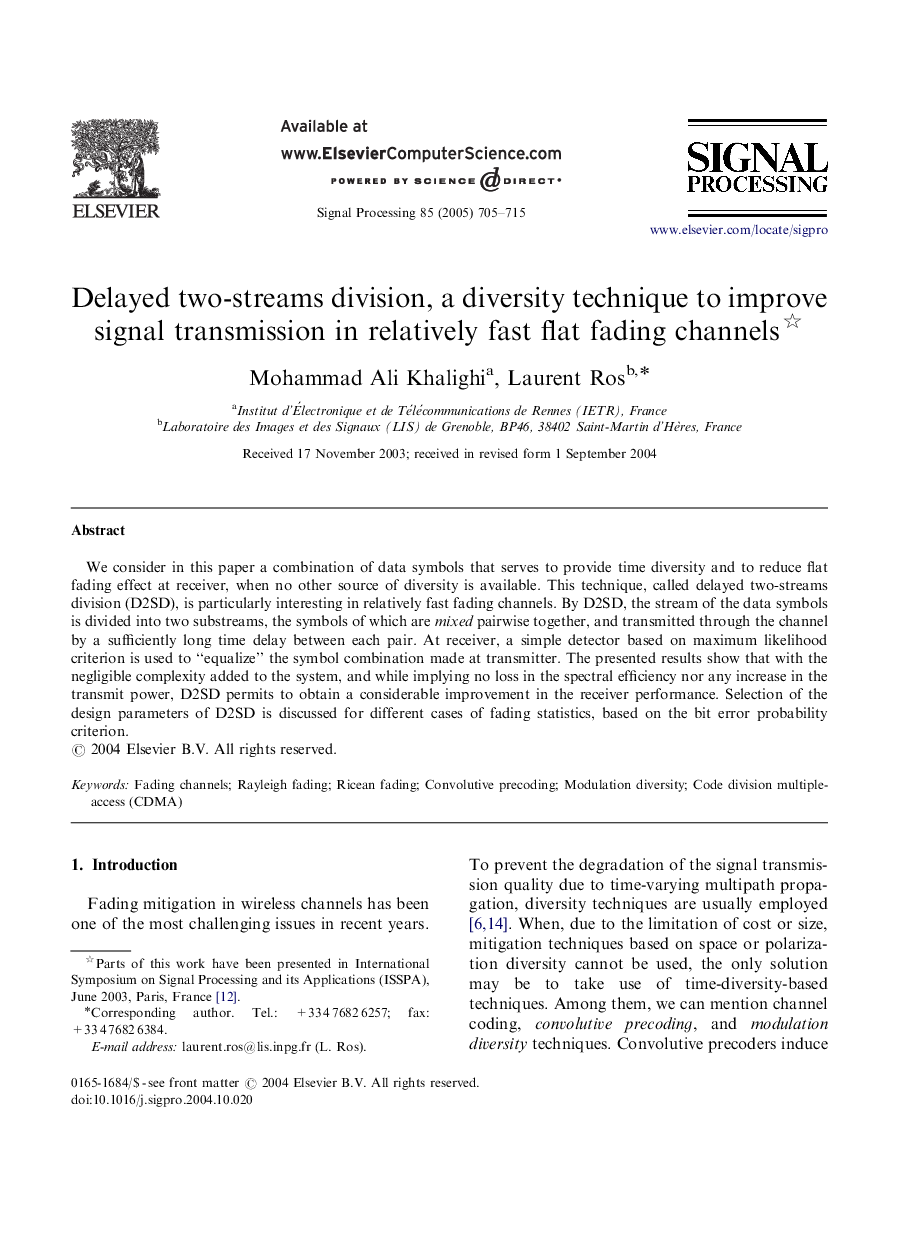| Article ID | Journal | Published Year | Pages | File Type |
|---|---|---|---|---|
| 10370419 | Signal Processing | 2005 | 11 Pages |
Abstract
We consider in this paper a combination of data symbols that serves to provide time diversity and to reduce flat fading effect at receiver, when no other source of diversity is available. This technique, called delayed two-streams division (D2SD), is particularly interesting in relatively fast fading channels. By D2SD, the stream of the data symbols is divided into two substreams, the symbols of which are mixed pairwise together, and transmitted through the channel by a sufficiently long time delay between each pair. At receiver, a simple detector based on maximum likelihood criterion is used to “equalize” the symbol combination made at transmitter. The presented results show that with the negligible complexity added to the system, and while implying no loss in the spectral efficiency nor any increase in the transmit power, D2SD permits to obtain a considerable improvement in the receiver performance. Selection of the design parameters of D2SD is discussed for different cases of fading statistics, based on the bit error probability criterion.
Keywords
Related Topics
Physical Sciences and Engineering
Computer Science
Signal Processing
Authors
Mohammad Ali Khalighi, Laurent Ros,
